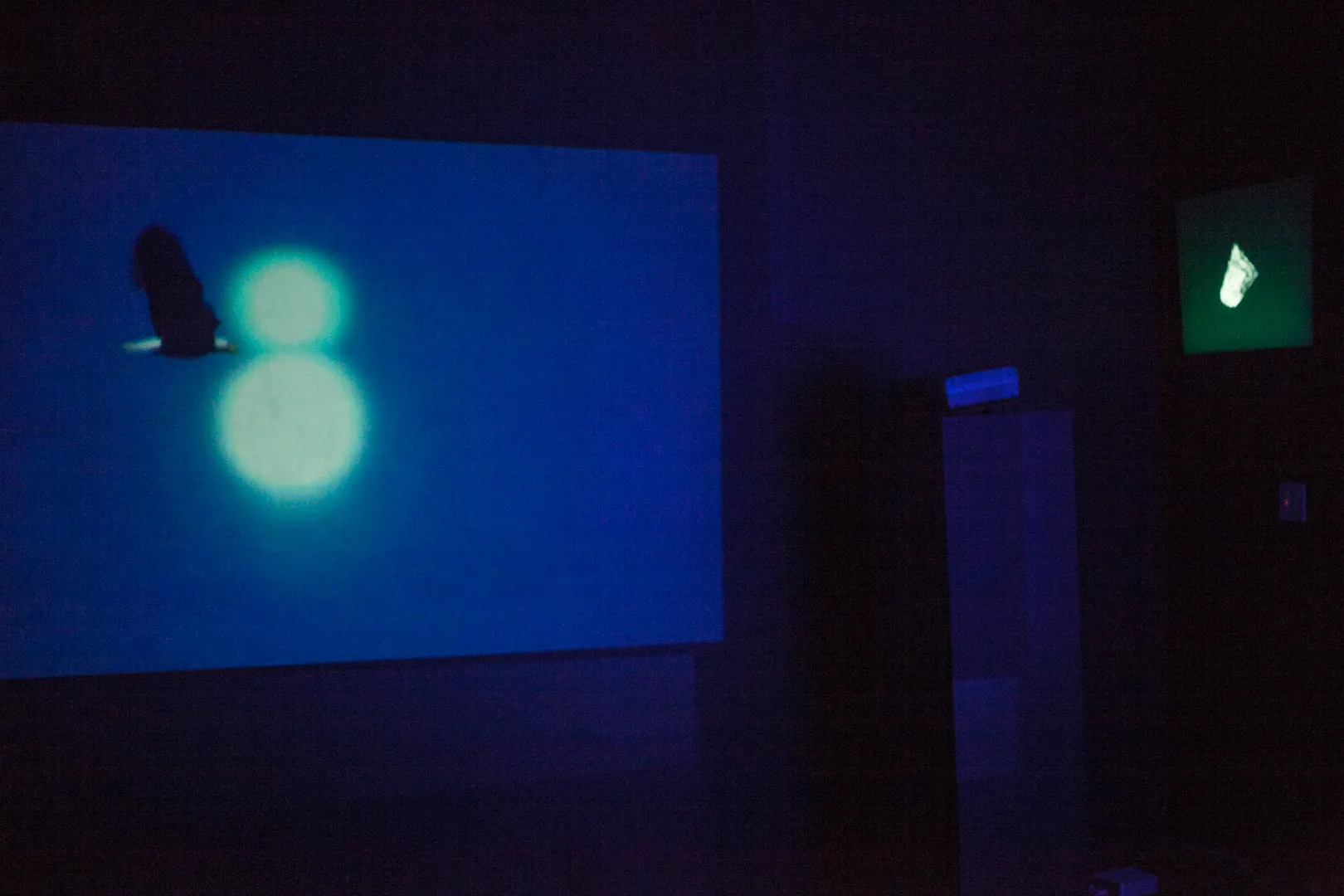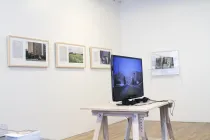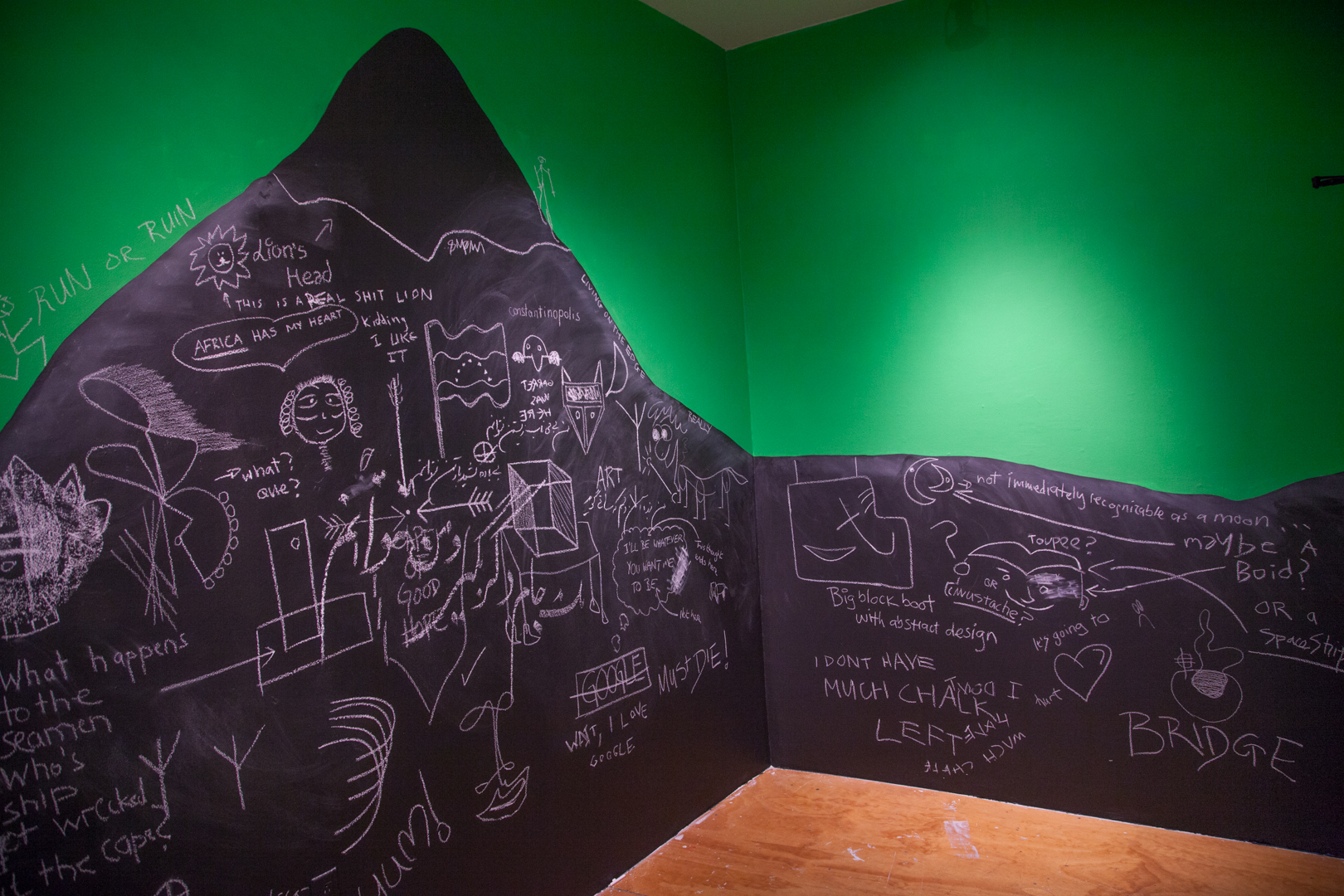
Emilie Lundstrøm: “Shape Shifter”, is that you?
Bridget de Gersigny: Isn’t it all of us?
Bridget chose to work with video in order to address our sense of time. She finds that meaning itself is a state of rhythm, of understanding and confusion. For these purposes photography was working in antithesis. Part of the conversation of a colonial past and present requires that we pay attention to the context in which meaning is created. She was aiming at a consistent moving and shifting—situating physical bodies in light projection and in sound space. Sound and projection are fleeting. The most physical is the equipment of display!
Bridget had grown bored of her conscious choices, of planning and mapping out the work in her mind. Instead, she found that she delighted in mishaps and deviations from her original idea.
Reading the book Depression: A Public Feeling by Ann Ccetkowich changed Bridget’s way of working.
She began making pieces that were interesting to her in any given specific moment without understanding how all pieces would fit together later.
Her aunt and father had died recently and she was interested in their relationship to a colonial past in South Africa—specifically the issue of land ownership. Bridget wanted to think about her relationship to the concept of land ownership and territories. She ended up with a piece about the intangibility of digital space versus physical space, and the amorphous non-boundaries that exist in a digital realm versus the world of flesh.
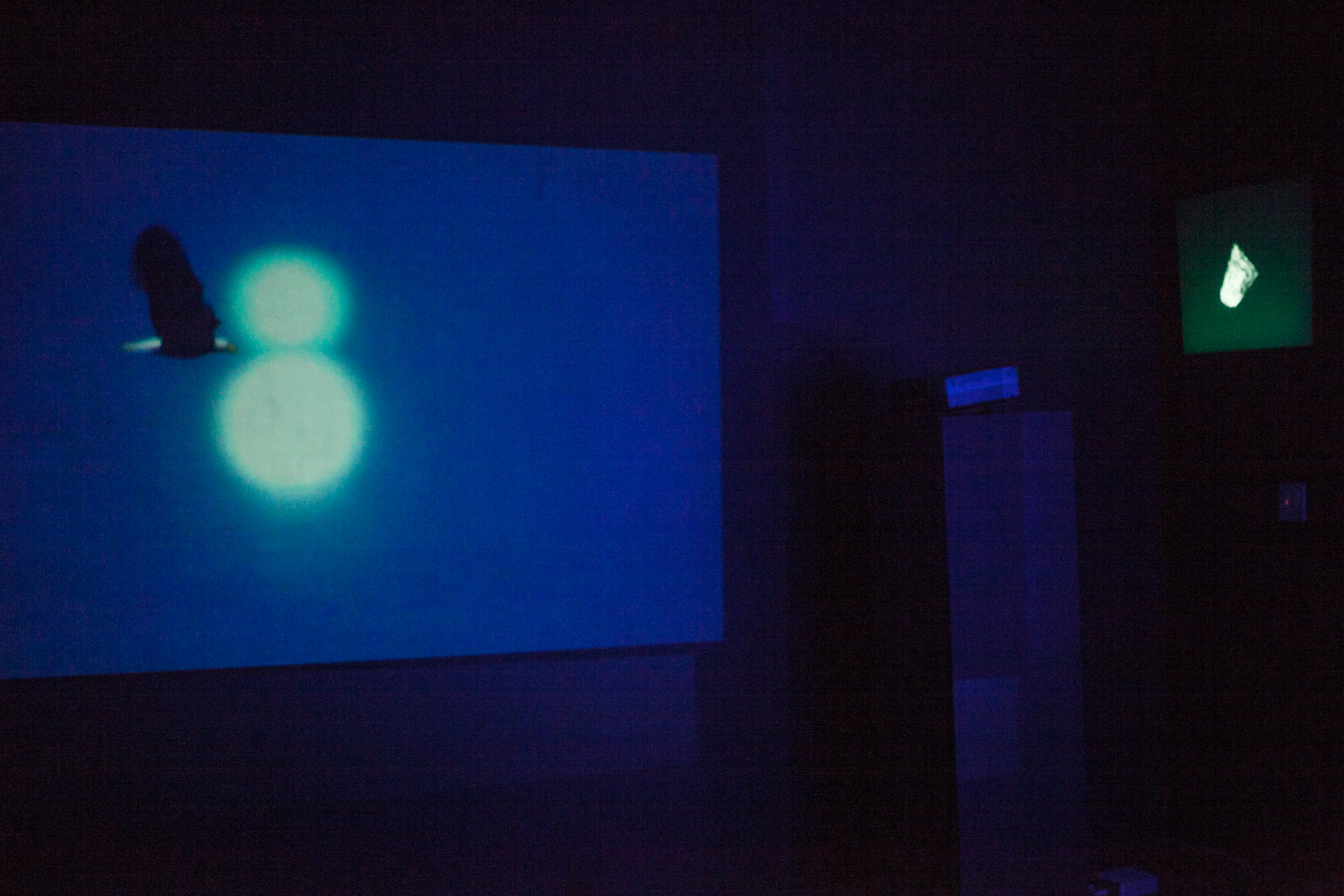
As a tour guide for the ICP Museum show on Apartheid, she heard the curator’s discussion of how Jan van Riebeeck established the Dutch East India Trading Company in 1652 in the Cape, how it shortened the trading route between the East and the West from 1 year to 100 days, and remapped time. This shift in corporeality and temporality of space became an inspiration for Bridget’s work—although not fully cognitive of this at the time, it stuck with her.
Bridget’s perceives the earth as a body. We as human beings are just small micro-systems in the larger history of the earth.
Boundaries and territories are transient, as are the structures we create to exist. Notions of temporality, sculpted in the various video pieces, are important. We engage with time on multiple levels: geologic time, which is almost unthinkably long; our immediate present, the time in which we live our every day lives; and spiritual time—eternity, memory, dreams, etc.
Our relation to each is very different.
On the question of what HEALING means to Bridget, she explains that healing is about people, and that acts of healing feel more like means of conversation towards states of togetherness. We need faith in something that isn’t always tangible or understandable.
There is nothing we can call “mine” in a digital age—thinking it’s amazing that there are four clips of burning macs in free stock libraries! There is an inability for representational media to adequately do what we want it to do. The entire system breaks down in a way.
One of the videos has an alien ship spotted off the tip of The Cape of Good Hope and recorded through Google Earth: another system of colonization.
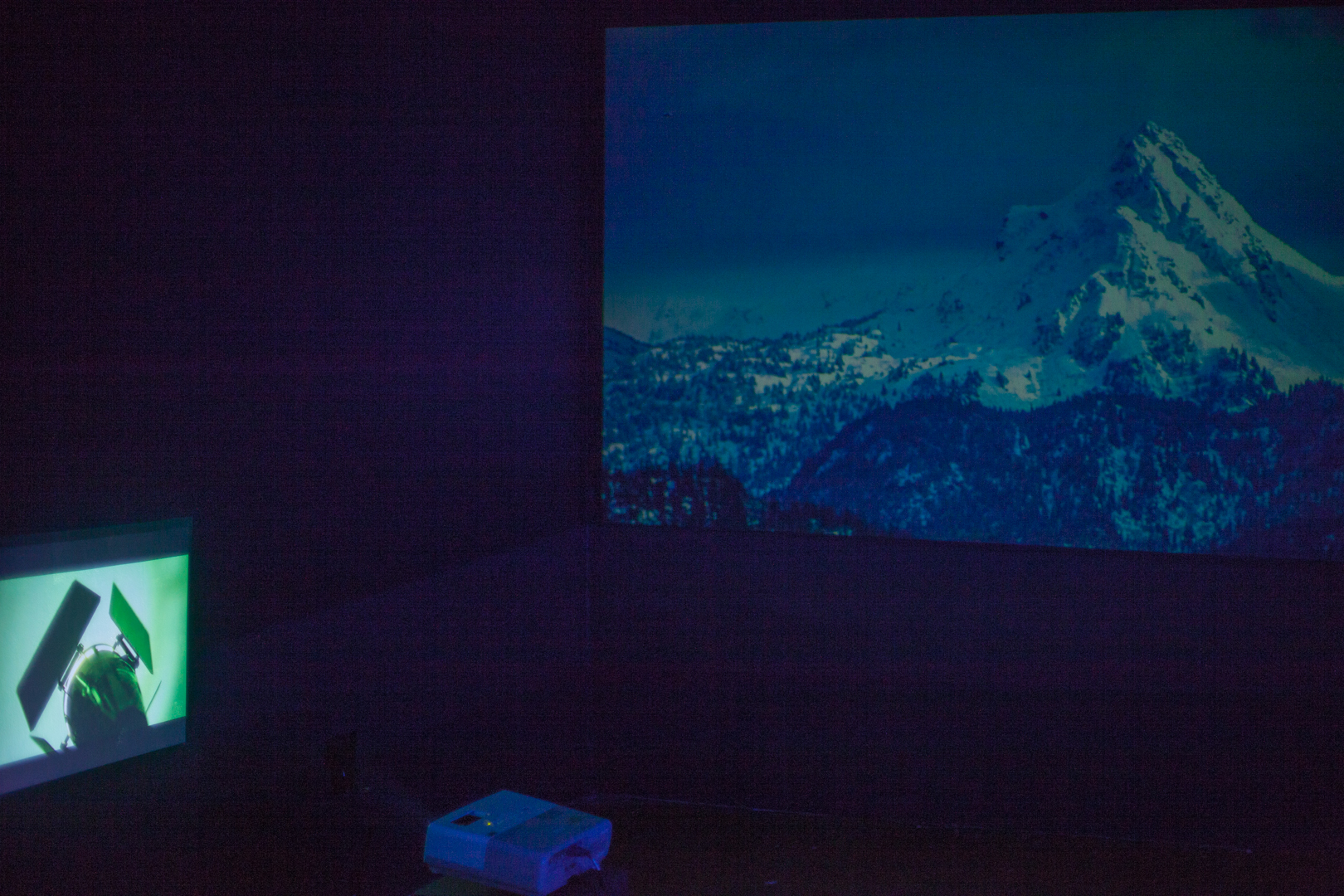
Bridget de Gersigny: What I love about that video is this little white hand dragging a land mass across digital space, in still images. And the shadows and still shots of people are present throughout. But it’s the white hand dragging a land mass in digital space that to me is the spookiest thing of all. This break down was important to me. In temporal terms as well as physical and representational terms.
Emilie Lundstrøm: Your performance was moving to me: from present to past memories? Someone you cannot compete with. Someone strong. Someone gone, though the box is still there. The box of dreams?
Bridget de Gersigny:Thank you. I wrote that in the same way that I made the video. I wasn’t exactly sure what the plan was and had been reading Joan Didion’s ‘Why I Write’ prescribed to us as a class reading by Liz Brown. Didion said she writes to understand what she is thinking. It was like that. The absence of the I or a specific physical body was frustrating me.
Emilie Lundstrøm: The raven is a symbol of grief—you feel sad seeing a raven. Maybe because it’s the one bird you do not want to connect with—a raven steals people’s treasures. Do you feel the raven is taking “the treasure of you” away? Does it bring you closer to the ones you’ve lost?
Bridget de Gersigny: This is interesting, I hadn’t thought of it like that. Definitely something more along the lines of states of trauma that may be part of our cycle. I’m not sure yet. Something else.
Emilie Lundstrøm: Do you feel truly connected with your senses more than anything else?
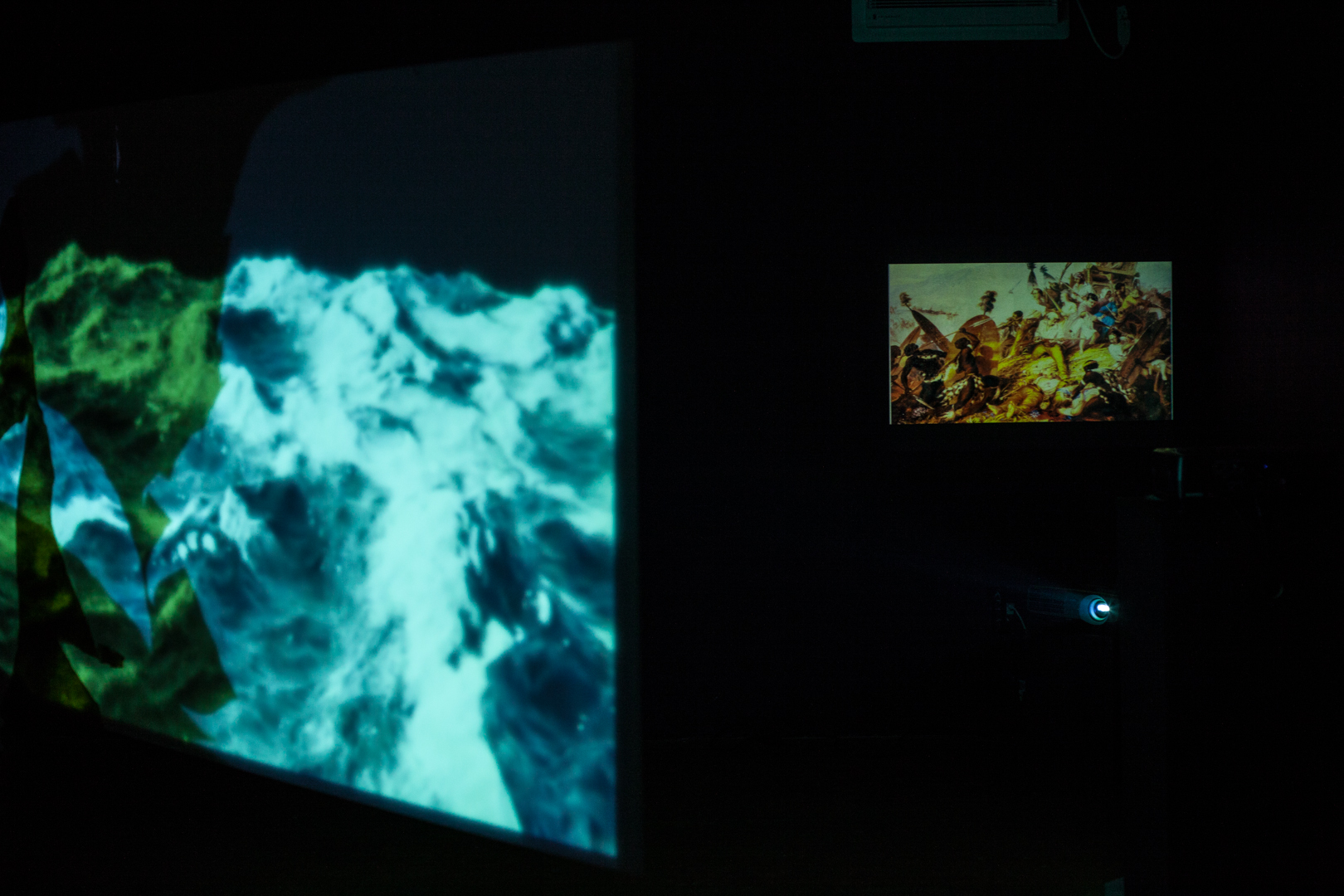
Bridget de Gersigny: Yes, the sensate experience is fundamental to me. I think our bodies can process an enormous amount of information across the senses which are not always immediately accessible through cognitive reason. It’s something I love and hate about the digital media. It’s so physically absent, whilst still managing to evoke extraordinary sensory affect.
Emilie Lundstrøm: We are at ICP! How come many MFA students move away from photography—choose other media—while studying here? Why are there no photographs in your show?
Bridget de Gersigny: I feel compelled to say I love photography ha! I think I answered this earlier. It’s just not how I am working right now. But you are right, I think people are pushing the boundaries of the medium in many ways and this increases every year. Typically we don’t associate sound with photography, video sometimes, but not so much sound. But to me sound is very linked. It works as a system of imaginative representation, if there is such a thing. The suspension of belief is in a way incredibly sensorial, and subjective. Images are also like this.
There were some ‘photographs’ in my show, they were just moving.


